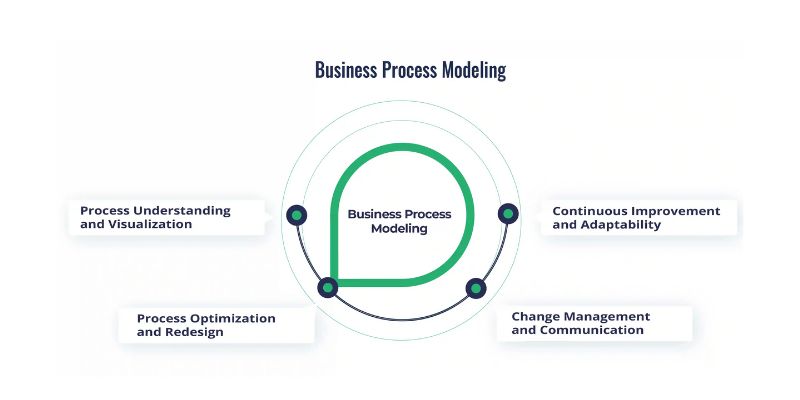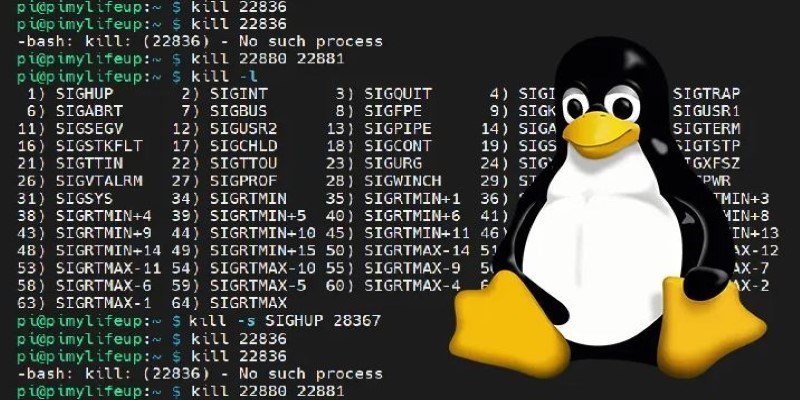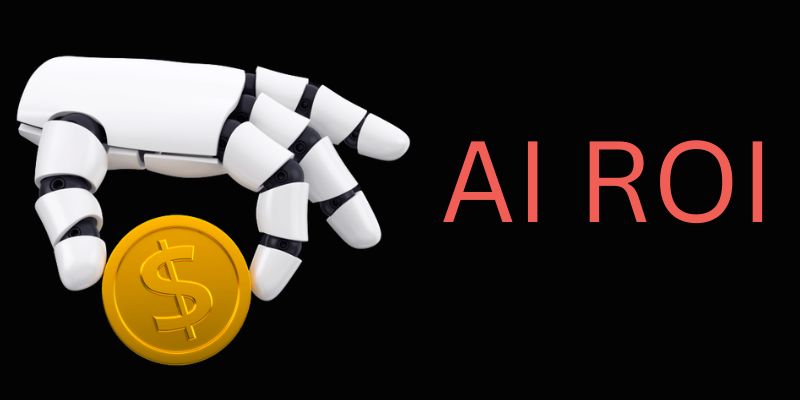Advertisement
Maximizing operational efficiency depends on an understanding of business process modeling. It facilitates the visualization, analysis, and improvement of operations. Various business process modeling strategies, illustrated with examples, help companies map their workflows. These models help identify inefficiencies, and selecting the appropriate method increases performance and clarity. Managers often rely on models to ensure every department supports corporate objectives.
Effective modeling simplifies complex systems and guides decision-making. Methods vary depending on organizational goals and requirements, with each model offering unique advantages—from basic flowcharts to sophisticated BPMN diagrams. Applying effective business process improvement techniques results in better communication and fewer mistakes. Adapting the approach helps enhance performance. Nowadays, corporate transformation efforts largely revolve around popular workflow mapping strategies.

Here are the top processing modeling techniques with their examples:
One of the most often used modeling tools in companies is a flowchart. Their visual arrangement is straightforward. Representing a series of events is made possible by boxes, arrows, and symbols. Every symbol specifies a particular kind of action or step. One can easily build and grasp them. Flow charts expose operational gaps and repetitions. They're ideal for showing linear processes with few branches. Many companies choose them for documentation and training. For simple tasks and small teams, these diagrams would be perfect. Managers can have rapid overviews with them. One can readily model, for instance, a retail return system. The steps consist of a return request, inspection, and refund. Software tools for creating flow charts include Lucidchart or Draw.io. Beginners would find them perfect because of their simplicity—business mapping solutions based on flowcharts fit businesses striving for operational clarity and quick onboarding.

One consistent approach for simulating intricate corporate processes is BPMN. It specifies methods using particular symbols. These cover tasks, events, gates, and flows. BPMN backs thorough departmental process representation. It closes the distance separating technical teams from corporate managers. Its methodical approach improves organizing and preparation. BPMN backs system integration and automation. Every component is simple enough to follow and change. One often-used example is a customer service complaint procedure. It covers ticket generating, fixing, and feedback collecting. BPMN promotes consistency and compliance. It also offers an understanding of performance criteria. BPMN is used extensively on many business systems, including Bizagi and Camunda. These tools enable better processes and help to lower delays. Scaling operations and enhancing responsibility call for standardized business process diagramming tools such as BPMN.
Mostly applied in software development, UML is a potent modeling tool. Still, it also promotes business process modeling. It offers several diagram kinds, including activity, use case, and sequence diagrams. UML facilitates the clarity of interactions across systems, people, and processes. Every diagram catches several aspects of workflow. Activity diagrams map data or control flow. Use case diagrams to emphasize user engagement. Sequence diagrams show time and sequence. Technical environments and cross-functional teams call for UML. It clarifies structure as well as behavior. One often-used application is online order handling. It covers ordering, handling money, and delivering goods. UML tools help create diagrams using Visual Paradigm and StarUML. For IT-heavy companies, cross-functional workflow modeling solutions like UML have great value.
Suppliers, Inputs, Processes, Outputs, and Customers stand as SIPOC. It's a high-level process mapping tool. SIPOC diagrams present a whole perspective of a company's operations. Before delving into specifics, they help to identify important process factors. Six Sigma's defined phase makes this method valuable. SIPOC helps one to grasp the roles of stakeholders. It also clarifies input-output linkages. Every letter of the acronym stands for a critical process component. Under a credit approval procedure, for instance, suppliers are applicants. Documents form inputs; loan choices form outputs. SIPOC guides the definition of every process's defined limits. It advances goal alignment and responsibility. These charts help team cooperation and openness. Strategic planning and ongoing improvement depend on high-level operational mapping frameworks such as SIPOC.
Value Stream Mapping is mostly concerned with giving the client value. It stresses every stage of a process, from beginning to end. VSM helps one to determine which actions provide value and which do not. Lean manufacturing informs this strategy. Production and service sectors find extensive applications for it. VSM improves efficiency and helps reduce waste. Every stride is tracked to reveal repetitions and delays. Symbols stand for content flows, knowledge, and actions. One excellent illustration is the creation of a product. Raw materials, assembly, packing, and shipment comprise the steps. VSM supports time-saving and cost-cutting. VSM diagrams are produced in part by tools including Minitab and SmartDraw. Data insights let teams prioritize enhancements—client-oriented process enhancement techniques, including VSM, ensure faster delivery and improved quality.
Gantt charts are graphical tools based on timelines. They enable the tracking of project tasks and their respective timeframes. Every assignment is shown as a bar on a calendar. Gantt charts show milestones, deadlines, and dependencies. Gantt charts are perfect for process design and execution. They give teams a clear view of start and end dates and can be easily updated and monitored. These charts also track real-time progress. One often-used example is a marketing effort. It covers work planning, content development, delivery, and review. Gantt graphs let one find early on delays. Managers can efficiently allocate funds. Tools enabling Gantt chart development include Microsoft Project and ClickUp. Project-driven environments would find these charts ideal. Gantt charts and other time-based task management tools improve planning accuracy and productivity.
FFBD offers a disciplined way to depict consecutive actions. Every block stands for a certain purpose. Arrows indicate how logically one function flows from another. FFBD helps systems engineering and operational planning. They are meant to examine big, complicated processes. Every level of the diagram highlights additional intricacy. In aerospace, defense, and technology sectors, FFBDs find application. They point to dependencies and functional linkages. One such a series is an aircraft testing one. Among the steps are test flying, diagnostics, and fuel loading. FFBDs ensure no steps are omitted. They back quality control and safety inspections. Tools such as CORE and Innoslate produce exact FFBD. These charts improve technical setting clarity. Key in regulated sectors with important processes is function-specific operations modeling frameworks such as FFBDs.
Using the right modeling approach can transform business operations. Each approach offers unique advantages, ranging from basic flowcharts to sophisticated BPMN and VSM techniques. Business size, objectives, and process complexity all influence the choice of the appropriate modeling method. Business process modeling methods, supported by examples, help teams increase workflow visibility. Companies can improve performance, reduce waste, and enhance teamwork. Clear illustrations enhance accountability and simplify communication. Using good business process improvement techniques ensures observable results. Models should be often revised for correctness. Popular workflow mapping strategies promote operational excellence and sustainable development in various fields.
Advertisement

How to run a chatbot on your laptop with Phi-2 on Intel Meteor Lake. This setup offers fast, private, and cloud-free AI assistance without draining your system

Apple joins the bullish AI investment trend with bold moves in AI chips, on-device intelligence, and strategic innovation

Explore how Microsoft’s KOSMOS-2 blends language and visual inputs to create smarter, more grounded AI responses. It’s not just reading text—it’s interpreting images too

Learn how to list files in a directory using Python with clear and practical methods. Covering os, glob, and pathlib, this guide is all you need to get started

Learn everything about file handling in Python with this hands-on guide. Understand how to read and write files in Python through clear, practical methods anyone can follow

How llamafiles simplify LLM execution by offering a self-contained executable that eliminates setup hassles, supports local use, and works across platforms

Learn the basics and best practices for updating file permissions in Linux with chmod. Understand numeric and symbolic modes, use cases, and safe command usage

Discover Nvidia’s latest AI Enterprise Suite updates, featuring faster deployment, cloud support, advanced AI tools, and more

How to kill processes in Linux using the kill command. Understand signal types, usage examples, and safe process management techniques on Linux systems

Microsoft’s new AI model Muse revolutionizes video game creation by generating gameplay and visuals, empowering developers like never before

Learn how to track real-time AI ROI, measure performance instantly, save costs, and make smarter business decisions every day

How the SQL DATEDIFF function helps calculate the gap between two dates. This guide covers syntax, use cases, and system compatibility